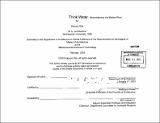Think water : reconditioning the Malden River
Author(s)
Oda, Kazuyo, 1969-
DownloadFull printable version (11.01Mb)
Other Contributors
Massachusetts Institute of Technology. Dept. of Architecture.
Advisor
Wellington Reiter.
Terms of use
Metadata
Show full item recordAbstract
The purpose of this thesis is to link water, history and culture through architectural and urban design by researching the potential for the rejuvenation of a neglected industrial site at the edge of a river. The Malden River in Massachusetts, one of the most polluted rivers in the Boston Harbor Watershed, was utilized by heavy industry during the late 19th and early 20th centuries for the purposes of power generation, shipping and waste removal. As the advent of modern urban systems for drainage and transport replaced the river's traditional roles, the waterfront has fallen into disuse and has become a classic post-industrial landscape. It is abandoned and contaminated, surrounded by old industrial buildings and warehouses and is more commonly known as a "brownfield." In order to re-evaluate the relationship between water and contemporary urban culture, this thesis explores the creation of a metaphorical "source" for the river so as to establish a new and fundamental bond between the architecture and the site. The source is of critical importance due to symbolic issues of quality, origin, and renewal. The selected site, sandwiched between the towns of Medford and Everett, is chosen to celebrate and demarcate the origin of the river, and second to rejuvenate the water front and surrounding industrial landscape, which is overgrown and polluted. These intentions are accomplished using two scales of design intervention. At one scale(the urban scale), water filtration technologies such as slow sand filtration and landscape design are brought together to create a civic space that creates a symbolic "source" for the river and celebrates its renewal. At a smaller scale, architectural interventions include a series of programs that will help develop a community awareness of the delicate relationship between culture and water. This program includes: a water research center, research library, auditorium, gallery, studio, observation tower, teahouse, restaurant and café. These programmatic aspects serve to generate activity that will bring life to the site and surrounding communities.
Description
Thesis (M.Arch.)--Massachusetts Institute of Technology, Dept. of Architecture, 2003. Includes bibliographical references (p. 56).
Date issued
2003Department
Massachusetts Institute of Technology. Department of ArchitecturePublisher
Massachusetts Institute of Technology
Keywords
Architecture.